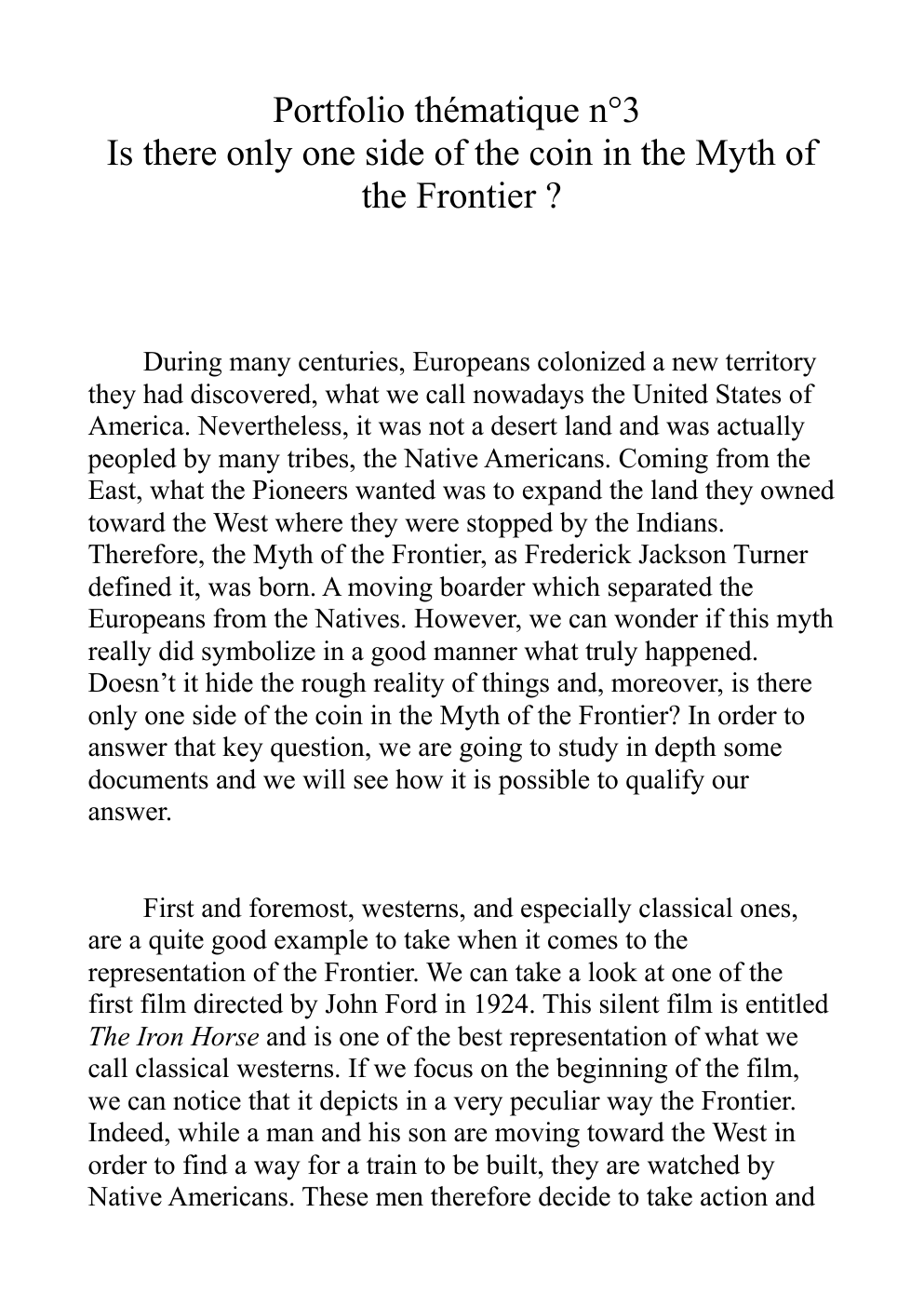Is there one side of the coin in the myth of the frontier?
Publié le 28/05/2022

Extrait du document
«
Portfolio thématique n°3
Is there only one side of the coin in the Myth of
the Frontier ?
During many centuries, Europeans colonized a new territory
they had discovered, what we call nowadays the United States of
America.
Nevertheless, it was not a desert land and was actually
peopled by many tribes, the Native Americans.
Coming from the
East, what the Pioneers wanted was to expand the land they owned
toward the West where they were stopped by the Indians.
Therefore, the Myth of the Frontier, as Frederick Jackson Turner
defined it, was born.
A moving boarder which separated the
Europeans from the Natives.
However, we can wonder if this myth
really did symbolize in a good manner what truly happened.
Doesn’t it hide the rough reality of things and, moreover, is there
only one side of the coin in the Myth of the Frontier? In order to
answer that key question, we are going to study in depth some
documents and we will see how it is possible to qualify our
answer.
First and foremost, westerns, and especially classical ones,
are a quite good example to take when it comes to the
representation of the Frontier.
We can take a look at one of the
first film directed by John Ford in 1924.
This silent film is entitled
The Iron Horse and is one of the best representation of what we
call classical westerns.
If we focus on the beginning of the film,
we can notice that it depicts in a very peculiar way the Frontier.
Indeed, while a man and his son are moving toward the West in
order to find a way for a train to be built, they are watched by
Native Americans.
These men therefore decide to take action and.
»
↓↓↓ APERÇU DU DOCUMENT ↓↓↓
Liens utiles
- The Buddha of suburbia
- the stolen generation
- The impact of social media on our societies through the changes in lifestyles, diversity and human rights.
- The madness of laicity
- Encyclopedia of Philosophy: THE CRito of Plato


